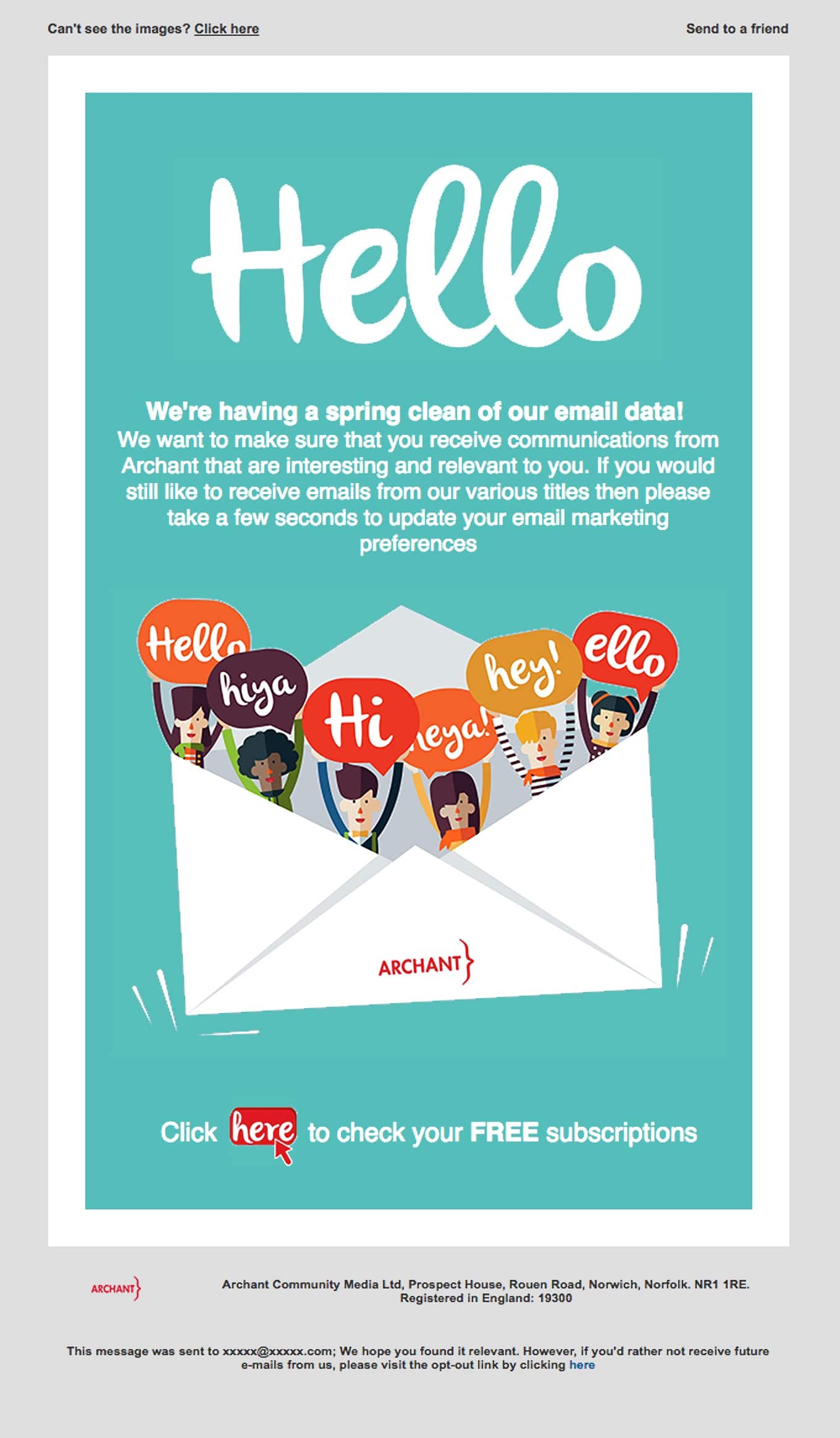Finding ways to improve your email campaigns has never been as essential as it is right now.
2020 has brought forth quite a few challenges to marketing professionals, as the need for contactless business has skyrocketed. More individuals are looking to increase their online sales, and, to do that, you must foster relationships between your brand and your customers.
Your email campaigns are vital, and here’s why
We see a rise in online shopping activity, thanks to online giants such as Amazon, Walmart, Costco, and others. Reports from earlier this year have suggested that, in 2019, the ecommerce share of total global retail sales was 14.1% and projected to continue growing by approximately 2% each year.
Source: Shopify
While these statistics are promising for those in ecommerce, due to the COVID-19 pandemic, online retailers are seeing explosive activity, especially in areas that have typically never seen such activity, such as online grocery orders. Forbes recently shared data from Rakuten Intelligence, which stated that online order volume from grocery merchants rose to approximately 201.1% between March 12, 2020, and March 15, 2020.
Again, while those numbers are promising for some, they aren’t being spread across all industries, as more and more consumers are reserving funds for what’s considered “essential.”
The best thing that brands can do now is continuing to build and nurture relationships with their current consumers, and the best way to do this is through email marketing. There’s never been a better time to reevaluate your email campaigns, and Campaign Monitor is here to help.
6 ways to improve your email campaigns
These 6 tips are must-know practices that should be used not only when revamping email campaigns, but during the initial creation process as well.
1. Practice good email list hygiene.
One of the most important pieces of your email marketing campaigns is your email list. It used to be enough to amass the largest subscriber list possible. Now, however, having the biggest list doesn’t mean anything if they’re inactive or if it’s made up of the wrong audience.
That’s why your team needs to take the time to go through your email list at a minimum of twice a year to weed out those who’ve simply lost interest. However, it should be done more frequently, such as quarterly. This action is known as practicing good email list hygiene.
The idea is to remove any email addresses that have bounced back, remove unengaged subscribers, and update any email address change requests from your subscribers. Once you’ve cleaned up your list, you should also send out a subscription update email that asks your readers if they still want to be a part of your mailing list. This ensures that your list is genuinely made up of individuals who wish to receive the content you work so hard to create.
Source: Really Good Emails
2. Automate your email campaigns.
Timeliness and consistency are essential when it comes to keeping your email list engaged. Time is money for most brands, so it’s impossible to sit down and send an email to everyone individually. That’s why, if you haven’t started already, you need to start automating your email campaigns.
Email automation is the process of creating email campaigns that are sent out after an individual has triggered a message by completing a predefined action. For example, when someone new signs up for your email list, they should receive a welcome email that welcomes them to the community, thanks them for joining, and explains what it is they can expect from your brand.
Source: Really Good Emails
Now, that doesn’t mean you have to send all that information in a single message. You should break it up into several different emails spread out over a predetermined amount of time. For example, you could send a thank you email first, welcoming them for signing up. A day later, you could send them an office “welcome” email that expresses how grateful you are for them taking the time to choose to sign up and join the community. You could also include a special promotion in this email as a secondary thank you to them. Finally, a day or so after your second message, you could send out a “what to expect” email outlining what they’ll be getting from you.
The highlight to automation is that, once you’ve set up your email series, you simply have to define the triggers, which can be a particular action or a specific timing, and they’ll be sent out for you every time these triggers are met.
3. Improve your email copy.
When it comes to improving your email campaigns, you need to make sure the copy of your email is performing adequately. While many will focus on the text of the actual email, it’s essential to point out that email copy is also included within your email subject lines and the preheader text as well.
Source: Campaign Monitor
Each piece of your email copy plays an important role in your email campaign’s success. For example, your email subject line is the very first piece of content that your reader will see when they see your name in their crowded inbox. Believe it or not, 47% of email recipients will open your email based on your subject line alone, so you must spend adequate time creating the best subject lines you can.
You then have to follow it up with compelling preheader text. According to MarketingSherpa, the addition of compelling preheader text has the potential of increasing your open rates by 30%.
As for the body of your email, you want to ensure that it’s not overly salesy, relates to each reader you’re sending it to, and leads to a compelling CTA.
Source: Really Good Emails
4. Proper segmentation is vital for creating highly personalized content.
Today’s consumers only want the most relevant content to show up in their inbox. Studies have shown, time and again, that consumers have no problem unsubscribing from a brand’s email list if they receive content that they don’t find relevant. It’s the second most popular reason why people hit the unsubscribe button.
The only way to combat this issue and improve your email campaigns is by properly segmenting your email list into in-depth, defined categories.
Many brands struggle with this because they feel as if they can’t get too personal with their subscribers and ask them for too much information. The best way to gather this information is by creating an email preference center that each subscriber has to fill out.
Source: Campaign Monitor
Once they’ve done that, you can categorize your subscribers accordingly, ensuring that you’re sending only the most relevant content to them as possible.
5. Pay attention to send frequency.
If irrelevant emails are the second most popular reason behind those pesky unsubscribes, what’s the number one reason? Getting too many emails.
Source: MarketingSherpa
While receiving too many emails can lead to unsubscribes, so can ghosting your readers. This is where email automation can come in very handy. Setting up time triggers for your email campaigns can help ensure that you’re spacing out the timing of your content and not overloading your readers or making them feel as if you don’t care.
Source: Campaign Monitor
Your email send frequency matters more than you may think, and the only way to determine the best send frequency that’ll appeal to your readers is by testing it out.
6. A/B test all emails before sending them.
A/B testing to improve each of your email campaigns is crucial because it’s the only way to perfect the content you’re sending out to readers. It can also be used to help you determine how often to send to readers, what types of content they prefer, and which CTAs they respond the best to.
Source: Campaign Monitor
Now, it’s important to point out that A/B testing should only be used to test out a single element of an email at a time. This is the only way to ensure you’re getting the right information on whatever it is you’re testing.
Wrap up
There’s never been a better time to sit down and work on ways to improve your email campaigns. Keep in mind that these are only six of the many tips that can help you improve your email campaigns sooner, rather than later:
- Email list hygiene is a must
- Start automating your campaigns, if you haven’t already
- Work on improving your email copy
- Practice email list segmentation
- Your email send frequency can play a part in your campaign success
- A/B testing your emails is vital
Ready to become an email marketing pro? Be sure to check out this infographic today.














